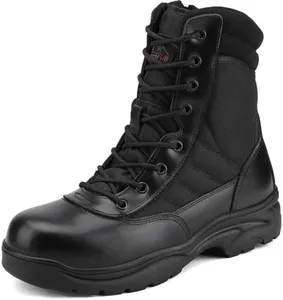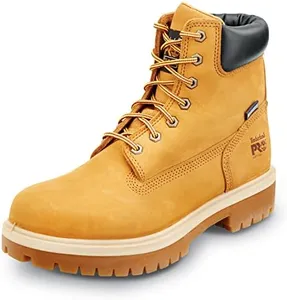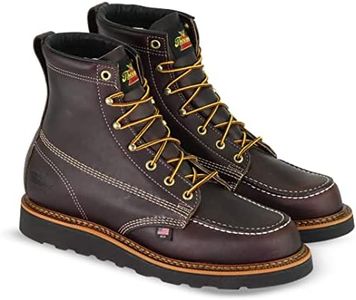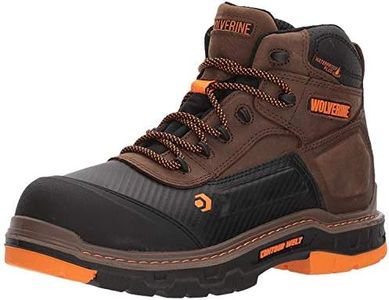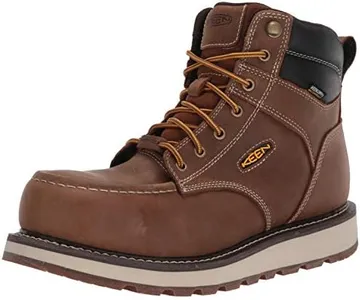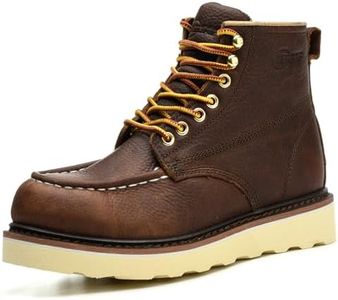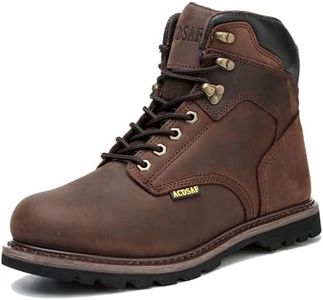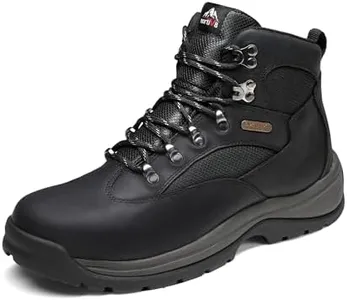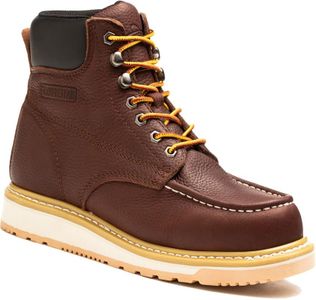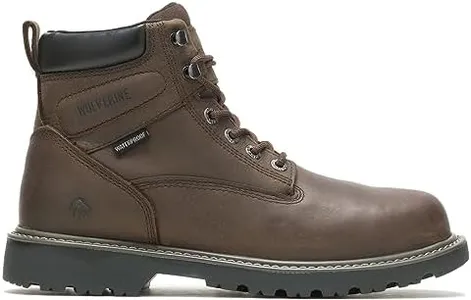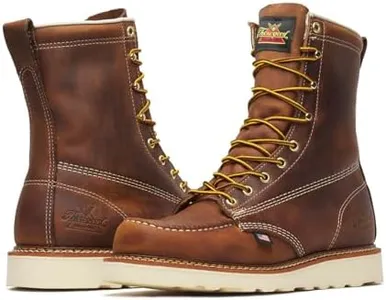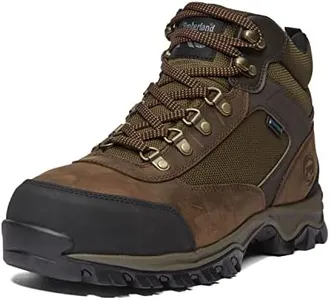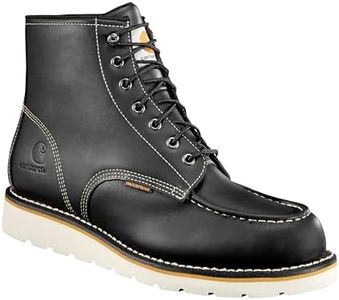10 Best Lightweight Work Boots 2025 in the United States
Our technology thoroughly searches through the online shopping world, reviewing hundreds of sites. We then process and analyze this information, updating in real-time to bring you the latest top-rated products. This way, you always get the best and most current options available.

Our Top Picks
Winner
Timberland PRO 6IN Direct Attach Men's, Wheat, Soft Toe, MaxTrax Slip Resistant, WP/Insulated Boot (10.0 M)
Most important from
7352 reviews
The Timberland PRO 6IN Direct Attach Men's Wheat Soft Toe Boots offer a range of features that make them suitable for various work environments. Being made from waterproof leather and featuring seam-sealed waterproof construction, these boots are excellent for those working in wet conditions. The MaxTRAX slip-resistant outsole ensures good grip on slippery surfaces, adding to the boot's safety credentials. The boots are also ASTM EH compliant, providing electrical hazard protection, which is essential for certain job sites.
It's important to note that these boots come with a soft toe, meaning there is no additional safety toe cap for protection against heavy falling objects. While this makes the boots lighter and more comfortable for extended wear, it might not be ideal for jobs that require reinforced toe protection. The thermoplastic polyurethane sole is durable and non-marking, but it might lack the flexibility of rubber. The fit and comfort are generally praised, especially with the lace-up closure that allows for a snug fit. The 7.25-inch shaft height offers good ankle support.
Despite their many strengths, breathability might be a concern due to the waterproof leather material, potentially making them less suitable for extremely hot conditions. These Timberland PRO boots are a solid choice for those needing waterproof, slip-resistant work boots without the need for toe protection. They are ideal for environments where electrical hazards are a concern, but might not be the best option for jobs requiring steel or composite toe caps.
Most important from
7352 reviews
Thorogood American Heritage 6” Moc Toe Work Boots for Men - Soft Toe, Premium Full-Grain Leather with Slip-Resistant Wedge Outsole and Comfort Insole; EH Rated, Trail Crazyhorse - 11 D US
Most important from
8163 reviews
The Thorogood American Heritage 6” Moc Toe Work Boots are a solid choice for those in need of durable and comfortable footwear for tough jobs. Made from premium full-grain leather, these boots are built to last. Their lightweight nature, weighing approximately 1.9 pounds, makes them ideal for extended wear without causing fatigue. The soft toe design provides comfort, but may not be suitable for environments requiring steel toe protection.
The MAXWear Wedge slip-resistant outsole excels in providing traction on various surfaces, including loose gravel and wet conditions, making them reliable for different work settings. Additionally, the boots meet ASTM standards for slip resistance and electrical hazard resistance, adding an extra layer of safety. Comfort is a key strength, with a removable Ultimate Shock Absorption footbed that cushions impacts and helps keep feet dry. The Goodyear storm welt construction enhances durability and moisture resistance, ensuring longevity.
However, the boots may not be completely waterproof, which could be a drawback in very wet conditions. The fit and comfort are generally praised, partly due to the fiberglass shank construction that offers necessary support without compromising flexibility. Although breathable to a certain extent, full-grain leather may not offer the same level of ventilation as mesh alternatives. Best suited for maintenance workers, electricians, and mechanics, these boots also have a stylish appeal, making them popular off the job as well. While they provide excellent ankle support with a 6-inch shaft height, individuals seeking lower-cut options may need to consider other models. These boots are durable, comfortable, and provide good safety features, but may fall short in extremely wet environments.
Most important from
8163 reviews
Wolverine men's Overpass 6" Mid Composite Toe Waterproof Work Boot, Summer Brown, 9.5
Most important from
860 reviews
The Wolverine Men's Overpass 6" Mid Composite Toe Waterproof Work Boot offers a range of features designed for comfort and protection in a work environment. Weighing on the lighter side, these boots use premium waterproof leather, ensuring durability and resistance to water and abrasions. The composite toe provides strong protection, meeting ASTM standards, making them ideal for hazardous work sites. The rubber sole is slip, oil, water, abrasion, and chemical-resistant, adding an extra layer of safety.
The athletic contour welt construction allows the boots to move with you, providing flexibility and comfort throughout the day. The removable ortholite cushioned footbed is another plus, offering all-day comfort and support for your feet. However, breathability might be an area of concern with 100% leather construction, which could lead to warmer feet during long hours, especially in hot weather. Additionally, while the medium fit suits many, those with wider feet might need to look for alternative options.
These boots would be most beneficial for workers in construction, manufacturing, or any field requiring sturdy, protective footwear that still offers some degree of flexibility and comfort.
Most important from
860 reviews
Buying Guide for the Best Lightweight Work Boots
Choosing the right lightweight work boots is essential for ensuring comfort, safety, and productivity on the job. The right pair of boots can make a significant difference in your daily work experience, especially if you spend long hours on your feet. When selecting lightweight work boots, it's important to consider several key specifications that will help you find the best fit for your needs. Here are the key specs to look out for and how to navigate them.FAQ
Most Popular Categories Right Now
